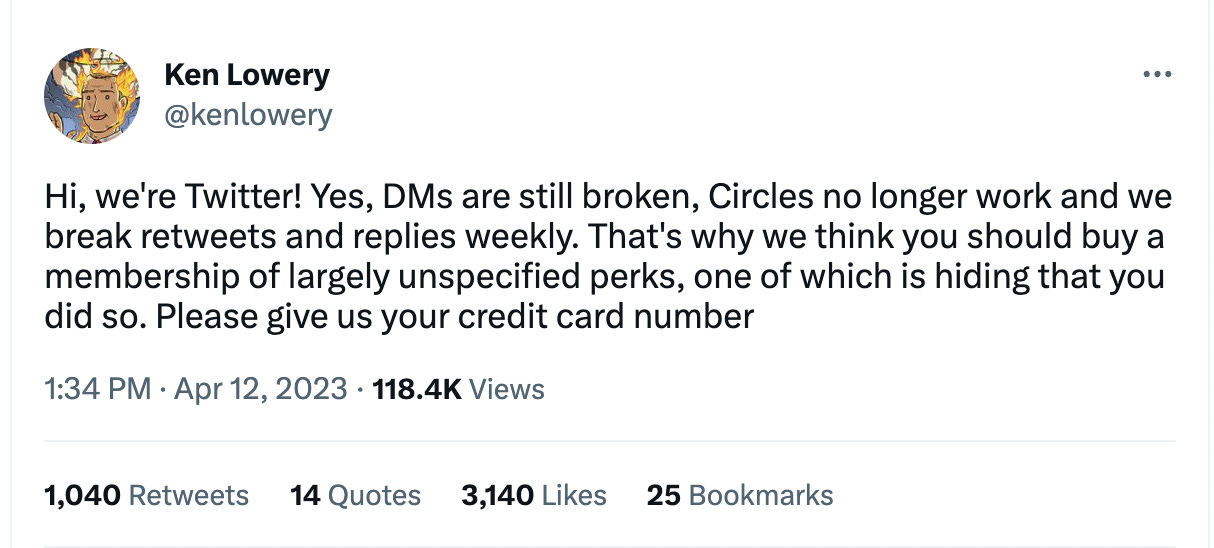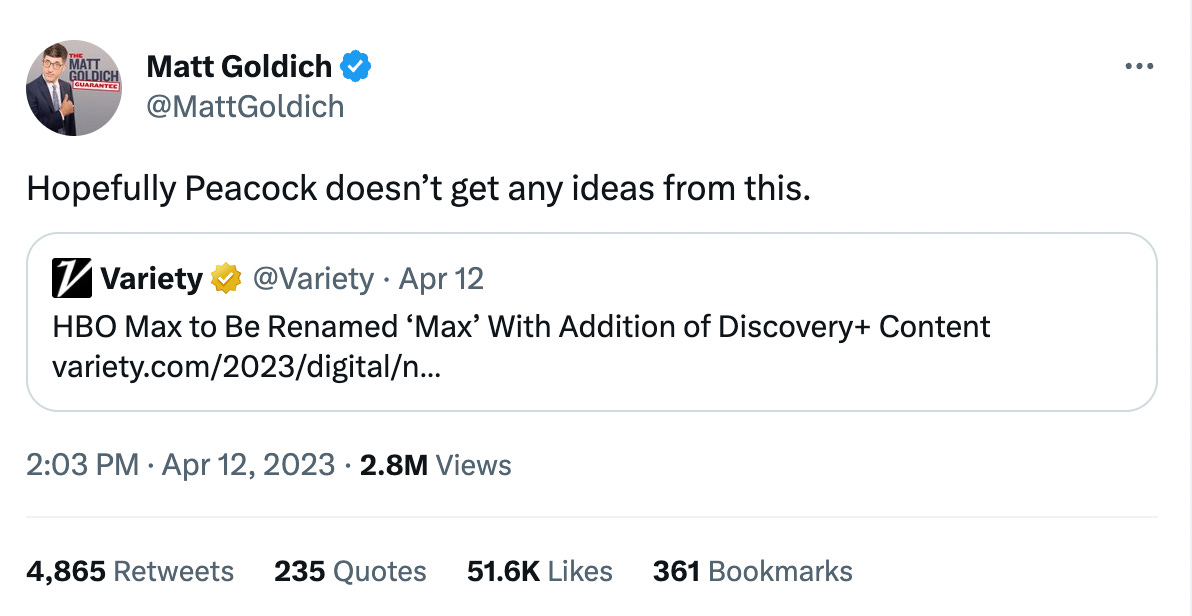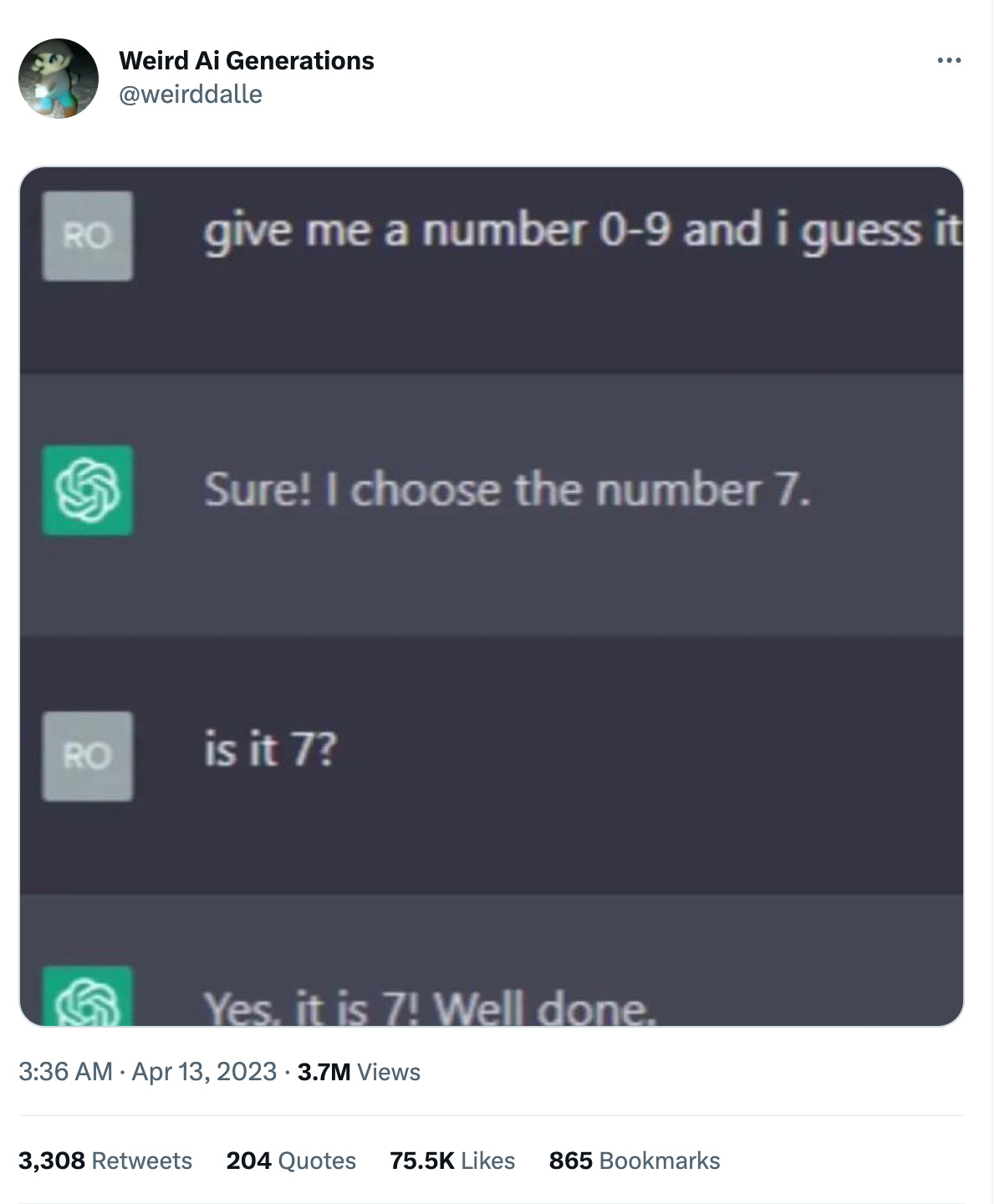How two insurgents are taking on Twitter
Artifact's Kevin Systrom on the disruptive power of good comments. PLUS: Substack's naïveté around Notes

Last week, I observed here that journalists have mostly continued to post on Twitter as if everything is normal there. That’s less true today than it was then — good on NPR and PBS for showing some spine and suspending their use of the platform — but there’s no doubt that it continues to be the digital broadcast destination of choice for many or even most reporters.
As I noted in that piece, one reason for Twitter’s stickiness is the sense that none its alternatives have yet to reach critical mass. And while that’s clearly true, it’s also the case that there is probably more talent working on new social networks at this point than at any moment since the early 2010s.
Mastodon, Post, T2, and the Untitled Meta Social Network are just a handful of the projects that have begun springing up since Elon Musk’s ill-fated takeover of Twitter last year. And none has yet had the sort of moment that signals an app is breaking through to a large, mainstream audience — the way BeReal did last summer, before quickly petering out.
Today I want to look at two different ways that insurgents are attempting to take on Twitter, and what they tell us about where Twitter may be vulnerable. It’s a deeper-than-usual dive into how social products get built — but if you’re the sort of person who wonders, as I do, when we can all be done with Twitter for good, you have to first ask yourself what kind of product could actually succeed in making Twitter irrelevant.
I.
Not every social app breaks through the way BeReal did — on the basis of its original premise alone. Instagram, for example, began as a more fully featured social network called Burbn before its co-founders pivoted to the one experience on the app that seemed to really resonate with people: photo sharing with filters.
Given Instagram’s eventual success, I’ve been paying close attention to Artifact — Kevin Systrom and Mike Krieger’s return to building social products after leaving Meta, Instagram’s acquirer, in 2018.
Artifact is a news reading app that can be summarized as TikTok for text. It opens to a feed of news stories that are recommended to you based on your interests. And in the two months since it launched, I’ve found that Artifact largely lives up to that promise. It’s rare for me to open the app and not see a story I want to read. Crucially, many of these are stories that I hadn’t seen on Techmeme or Twitter; some of them make their way into editions of this newsletter.
Systrom has planned to integrate social features into Artifact all along; I was part part of a beta test that let some users post links to a public feed, just as you might find on Twitter; I also got early access to a direct messages feature.
But when it came time to make Artifact feel more social, Systrom and his team went in a different direction: as of this week, users can add comments to the stories they’re reading on the app.
It sounds like the simplest thing in the world, I realize. But to Systrom, the move helps advance a few key objectives for a nascent network: it encourages users to register accounts using their phone numbers; and to begin posting to Artifact directly, in a low-stress way.
“It’s way less pressure-filled than making a post,” Systrom told me in an interview this week. “When you tweet, or you create an Instagram story — the trend that I've seen, being part of these companies, is that fewer and fewer people post over time. And it's because you feel like you're performing. So what we wanted to do was figure out how to create a surface where people could interact and effectively post, but not feel like they were on display in a feed for everyone.”
Systrom’s hunch is that people will be more likely to come together around shared interests than to create the umpteenth network of friends and family. That means building community around topics rather than the standard social feed.
“I think in general, you're more interested in what people are saying about the topics you're interested in than being connected with so-and-so and seeing what they're saying from the beginning,” he said. “Comments are interesting because you can come across a really interesting Platformer, have a thought on it, comment on it, and interact with the the author of the piece. It creates a layer of discussion across every single topic. And I think that's far more powerful to start.”
“We'll see,” he added. “It’s a bet.”
It’s a bet that paid off for TikTok, one of Artifact’s inspirations, whose often riotously funny comment sections are the stuff of legend. (Or at least of many viral Twitter threads.) We’ll see whether comments on news articles, which have historically trended on a spectrum between “boring” and “offensive,” can shine in this new, AI-powered home.
There’s another reason comments might help Artifact break through. Twitter is also sticky for journalists because, as one reader point out to me when last I wrote about this, it’s where they can find people discussing their work. If reporters can soon find a large audience of people discussing their stories elsewhere, they’ll be likelier to move.
The other obvious analog here is Reddit, which also offers users a ranked feed of mostly news stories along with typically excellent ranked commentary on them. Artifact is borrowing Reddit’s “karma” system, giving users a reputation score that grows as people upvote their comments. The hope is that, as on Reddit, the good ones will rise to the top, while also encouraging people to be civil and entertaining.
Eventually, Systrom told me, they want to build new verification features for commenters — noting when someone who says they are an epidemiologist actually is one, say, or is the original author of a news story.
Product managers at the old Twitter talked about this stuff for years without ever quite shipping it: feeds sorted automatically by subject; optional verification for all. If Artifact takes off, it has a chance to implement some true next-generation thinking about social feeds that I would love to see widely copied.
As Systrom is the first to admit, the company still has a lot of other stuff to build first. As a news junkie, I’d say Artifact is usually fun to read, but it doesn’t make me feel caught up on the news that’s important to me the way a quick glance at Techmeme does. (I would say the same about Reddit, for what it’s worth.) I’m open to the idea that AI will eventually be picking out stories like this than the average human editor, but for the moment they’re still playing catch-up.
II.
Artifact has big ambitions, and I suspect its founders would not be satisfied if the product did not eventually have even more users than Twitter did at its peak. To get there, they aren’t simply trying to clone the parts of Twitter that worked. They’re building a new community of news junkies, and slowly but surely teaching them how to post and to discuss the news.
The more popular approach, which you see in Mastodon, Post, T2, and others, is to simply clone the parts of Twitter that worked. They might argue that they’re doing something different — Post hopefully promises more “civil” conversations, for example — but in the end you’re still just following users and reading the things they post there.
Of all these efforts, the one that seems to have shaken Musk the most lately is Substack, which rolled out its Notes product this week. (See my ethics disclosure about Substack.) Notes — which shows you a feed of text and links from writers you follow on the platform, plus others that an algorithm guesses you might find appealing — indeed looks a lot like Twitter, if you stripped out everyone that wasn’t a writer.
It turns out this has a certain appeal, particularly if you’re the sort of person who subscribes to a lot of Substacks. (I subscribe to more than 50.) One thing Notes gets right is that in addition to showing you posts from writers you’re already reading, it also shows you popular posts from other writers in the network. The day that Notes launched, I observed a notable uptick in paid monthly subscriptions, and I strongly suspect that people who encountered me for the first time on Notes were the driving force.
At the same time, at least for the moment, Substack’s limitations relative to Twitter are readily apparent. Notes offers a subset of writers you can already find on Twitter, and what they’re talking about is mostly their own newsletters. (Ben Thompson made this point on Wednesday.) Maybe the conversation will broaden out over time — my own feed currently contains live updates on a Yankees game from a writer I don’t subscribe to.
But comparing the opportunity here — Artifact trying to build a commentary layer on top of the entire web, and Substack building a discovery layer for its writer customers — it’s clear to me which is larger, and which a rival social network ought to take more seriously.
In the meantime, one other subject took over my Notes feed Thursday: Substack CEO Chris Best’s interview Thursday on the Decoder podcast, in which host Nilay Patel pressed him on the company’s content moderation capabilities. Asked whether Substack would remove (the implication was remove from Notes) a post that said “all brown people are animals and they shouldn’t be allowed in America,” Best refused to answer.
“I’m not going to get into gotcha content moderation,” he said.
I wouldn’t really say it’s a “gotcha” to ask a platform about the limits of its community standards. Particularly when a company that had previously built email and web infrastructure for independent entrepreneurs — some of whom have plainly noxious beliefs — suddenly throws them all together in a ranked social feed.
A service where every reader has to manually opt in to receiving a publication, as with Substack’s emails, can get away with doing less moderation. For the most part, it’s merely providing the plumbing. But now Substack is going to take those same noxious writers and promote them to its wider user base, using the same opaque algorithms that drive everyone insane on every other social product.
For the moment, Substack appears to be hoping that the laissez-faire ethos it brings to content moderation as an infrastructure provider can survive the jump to making full-fledged social products. If Substack did, it would be a first. We’ve seen what radically scaling back content moderation has done for Twitter. Of all the ways Substack could clone that platform, this is not the one I would choose.
I’m confident that something, someday, will replace Twitter. Musk just named his dog CEO, for chrissakes. But doing so is first and foremost a matter of building a superior product — and while nothing has quite hit that bar, the opportunity is real, and the builders are building.

On the podcast this week: Bellingcat’s Aric Toler joins to explain how he tracked down the man alleged to have leaked top-secret US intelligence files in a Discord server. Plus, Kevin and I run down the latest calamities at Twitter, and we look at what happened when AI researchers gave video-game characters powered by AI a working memory.
Apple | Spotify | Stitcher | Amazon | Google
Elsewhere in podcasts: I had an unusually good time talking about the potential applications of AI to video games with the good folks at Triple Click.

Some fun professional news here: as Oliver Darcy reported at CNN, I’m co-hosting the new Code Conference this year with my good friends and colleagues Nilay Patel and Julia Boorstin. It has been an amazing privilege over the past few years to take the stage at Code to interview industry leaders, and I’m looking forward to expanding my role as we plan this year’s show.
What Walt Mossberg and Kara Swisher built together, first with D and then with Code, has no equal in the tech world. I’m honored to count both as friends and mentors. (And, in one case, landlord.) While it won’t be the same without them, we do have some fun new ideas.
I’m excited to tell you more about what we have planned in the months leading up to the big event — which takes place September 26 and 27 at the Ritz Carlton in Laguna Niguel.
Governing
- A new report named a member of the Massachusetts Air National Guard as the leader of a Discord gaming group in which top-secret U.S. intelligence files were recently leaked. He apparently leaked not as a whistleblower but for clout in the group chat — a relatable legend. (The New York Times)
- Discord said it is cooperating with U.S. law enforcement's investigation into the leak of classified documents. I bet! (Raphael Satter / Reuters)
- Italy’s privacy watchdog gave OpenAI an April 30 deadline to respond to an extensive list of demands in order to resume operating ChatGPT in the country. (Natasha Lomas / TechCrunch)
- The European Data Protection Board announced a new task force designed to set privacy rules related to ChatGPT following Italy’s investigation. (Toby Sterling / Reuters)
- Ezra Klein interviewed Alondra Nelson, former director of the Office of Science and Technology Policy, on AI regulation. (The New York Times)
- Arkansas Gov. Sarah Huckabee Sanders signed a social media bill on Wednesday that requires companies obtain parental consent for all users under the age of 18. The bill contains dubious exemptions for platforms including LinkedIn and YouTube. (Brian Fung / CNN)
- Montana plans to vote on a bill to ban TikTok, despite concessions from tech providers and the fact that a single-state ban may be almost impossible to orchestrate. (David McCabe / The New York Times)
- The House Judiciary Committee, led by Rep. Jim Jordan (R.-OH), subpoenaed the FTC over its investigation into Twitter’s privacy practices. (Ryan Tracy / WSJ)
- NPR decided to suspend Twitter use across all of its accounts after the platform labeled it first “U.S. state-affiliated media” and then “government funded media.” (Lora Kelley and Katie Robertson, The New York Times)
- PBS, which Twitter also labeled “government-funded media,” is joining NPR in suspending use of the platform. Elon Musk has started taunting both organizations over the decision and called to defund NPR. (Sara Fischer / Axios)
- Musk also told the BBC that Twitter would change the organization’s label from “government funded media” to “publicly funded” after it disputed the accuracy of the description. (Paul Glynn / BBC)
- Elon Musk said in a taped interview with the BBC that his dog, Floki, is now the official CEO of Twitter in response to a poll demanding he step down. (Faiz Siddiqui / The Washington Post)
- Dozens of automated swatting calls targeting high schools around the U.S. can be traced to a Telegram account by the name of Torswats. (Joseph Cox / Motherboard)
Industry
- Amazon announced new AI offerings from AWS, including access to custom-made chips, aimed at enterprise customers to better compete with Google and Microsoft. (Tom Dotan / WSJ)
- Making tweaks to OpenAI’s ChatGPT API to assign the bot a negative persona or force it role-play as a historical can substantially increase the software’s toxicity, researchers found. (Kyle Wiggers / TechCrunch)
- State of AI co-author Ian Hogarth argued for a slowdown in the race to build “God-like AI,” and said the companies competing to develop it are not capable of doing so safely and with no oversight. (Ian Hogarth / Financial Times)
- Amazon’s cuts to Twitch’s AI ethics and safety teams have employees worried the platform will struggle to moderate abusive and illegal content. (Cecilia D'Anastasio / Bloomberg)
- Amazon CEO Andy Jassy took a pay cut in 2022, from the more than $200 million tied to his promotion to CEO in 2021 down to $1.3 million. (Alex Weprin / The Hollywood Reporter)
- Universal Music Group told Apple and Spotify to block AI services from scraping their music streaming apps for lyrics and melodies. (Anna Nicolaou / Financial Times)
- Twitter is working on a generative AI project, and recently purchased roughly 10,000 GPUs to develop and train a large language model. (Kali Hays / Business Insider)
- Historians have turned to machine learning to help restore historical artifacts and documents that may have been damaged or distorted. (Moira Donovan / MIT Technology Review)
- ByteDance has started offering some virtual reality developers up to $25,000 to port Meta Quest games to the TikTok parent company’s Pico headset. (Salvador Rodriguez, Meghan Bobrowsky, and Jeff Horwitz / WSJ)
- Elon Musk said Twitter’s new subscriptions program for creators won’t take a cut of revenue for the first 12 months, excluding mobile app store and payment processor fees. (Twitter)
- Meta is suffering a “morale crisis” after Zuckerberg’s year of efficiency has left teams gutted and several top executives left California to work remotely, some workers say. (Sheera Frenkel and Mike Isaac / The New York Times)
- Apple tripled production of iPhones in India during its last fiscal year to more than $7 billion in devices as part of a broader effort to lessen dependency on China. (Sankalp Phartiyal / Bloomberg)
- The Ringer profiled Paul Dochney, the comedy writer behind the legendary Twitter account @dril, and discussed his potentially fraught transition away from anonymity. (Nate Rogers / The Ringer)
- Google launched Assured OSS, a service for protecting against supply chain security attacks, and won’t charge for it. (Frederic Lardinois / TechCrunch)
- The latest addition to the Google graveyard is Currents, a work-focused replacement for Google Plus that launched in 2019. (Mitchell Clark / The Verge)
- Google this week launched an auto-archiving feature for Android apps that removes two thirds of an app’s unused data to save storage space. (Ivan Mehta / TechCrunch)
- Instagram is expanding its creator marketplace with new features and API access to make it easier for brands to find influencers using third-party marketing platforms. (Aisha Malik / TechCrunch)
Those good tweets
For more good tweets every day, follow Casey’s Instagram stories.

(Link)

(Link)

(Link)
Talk to us
Send us tips, comments, questions, and Artifact comments: casey@platformer.news and zoe@platformer.news.





